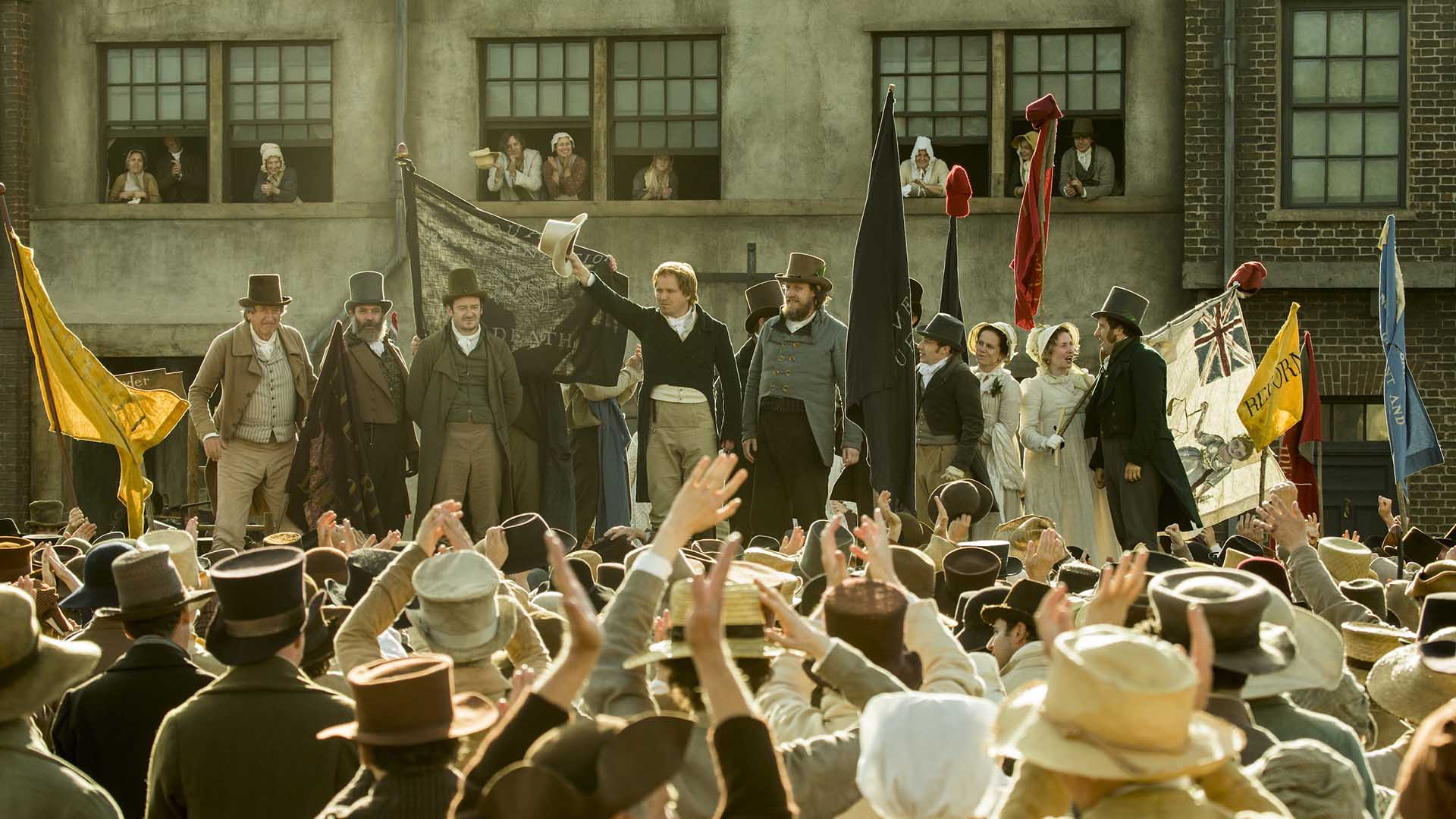Peterloo
Depicting an infamous chapter of British history from two centuries ago, this detailed period piece remains unsettlingly relevant today.
Overview
Given the current state of the world, it's impossible to dismiss historical accounts of power, conflict, bureaucracy serving the wealthy and the masses fighting to be heard as mere chapters from the past. The same applies to medieval-style television fantasies about squabbling over a throne, too, but true tales bite harder than Game of Thrones ever has. Peterloo is the perfect example. Chronicling an infamous clash between ordinary workers and the government-backed militia near Manchester in 1819, the period piece harks back to 200 years ago yet remains scarily, unsettlingly relevant today. Of course, that's part of filmmaker Mike Leigh's point — there's a reason that the 76-year-old veteran British director has just now turned his attention to this bloody battle for voting rights.
After spending a dozen years tussling with Napoleon's armies, the British people were tired, poor and hungry as the 19th century neared its third decade. Work was hardly reliable, food was scarce, industrialisation was taking its toll, distressed ex-soldiers were a common sight and even the pettiest of crimes could see someone shipped off to Australia. To make matters worse, few had a say in the country's path, with less than three percent of the population eligible to cast a ballot. It's this agitated climate that Peterloo explores, all to show how its brutal namesake event came about. The rich, the religious and the ruling classes wanted to retain the status quo. Charismatic reformers riled up everyday folks to fight for their rights. In the resulting physical skirmish — during a peaceful demonstration led by orator Henry Hunt (Rory Kinnear) — 18 people were killed and up to 700 injured among the 60,000-strong crowd.
Writing as well as directing, Leigh emphasises the scale and impact of the Peterloo massacre in an effective fashion, stepping through the wants, needs, emotions and motivations of the various players before unravelling the climactic confrontation. But there's a fire in his belly from the outset, as is made clear when he opens the film with the Battle of Waterloo, and those flames don't subside. Spending time with characters of all stations and piecing together vignettes of their experiences, he crafts a patchwork of a picture, each scene stitching on another crucial square with palpable urgency. Some of the people within his view scoff and laugh, while others struggle to get by. However it's the atmosphere of chaos, inequity, opportunism, exploitation and duplicity that was part and parcel of life at the time that earns the filmmaker's sharpest rebukes. That, and the eventual human fallout on the path to changing British democracy.
For a film based around such a violent event, more talk than action results; of course, as Leigh knows, words can cut just as deeply as weapons. Indeed, it's because Peterloo takes the time to survey the state of the nation at the time — including clear-eyed, unsentimental dissections of both camps in the government-versus-workers divide — that the massacre, when it comes, feels so punishing and relentless. There's a difference between a slog and an onslaught and, while the movie clocks in at 154 minutes, its speech-heavy and fight-fuelled portions still fall into the latter camp. Likewise, there's a difference between wallowing in misfortune (or, worse, romanticising it) and showing it like it was, and again Peterloo finds the right side.
What the film also finds is a fitting way to tell such a detailed and complicated story — not only in its narrative approach, but in its visuals. While Leigh's last release, the applauded Mr Turner, explored the life of a great 19th-century British artist, the term 'painterly' equally applies here. With cinematographer Dick Pope lensing his 11th title for the director, Peterloo's frames are alive with minutiae yet remain carefully composed. Pitch-perfect but never glossy costuming and production design helps. So too do solid performances across the board, including from the ever-reliable Kinnear, as well as Maxine Peake as a weary mother doing what's needed for her family. But it's Peterloo's look and feel that truly hammers home Leigh's intentions. To understand why the movie's real-life basis is so important, and to see the parallels between then and now, requires peering as closely as possible — staring steadfastly at the whole picture, warts and all.





